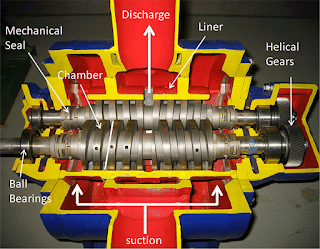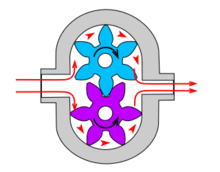1.4 Bent Axis Piston Pump

Simple Definition:- Hydraulic piston pumps can handle large flows at high hydraulic system pressures. Typical applications are mobile and construction equipment, marine auxiliary power, metal forming and stamping,machine tools and oil field equipment. In these pumps, the pistons accurately slide back and forth inside the cylinders that are part of the hydraulic pump. The sealing properties of the pistons are excellent. Detail:- In bent axis design, the displacement volume is dependent on the swivel angle: the pistons move within the cylinder bores when the shaft rotates. In swash plate design, the rotating pistons are supported by a swash plate; the angle of the swash plate determines the piston stroke. Bent axis pumps, axial piston pumps and motors using the bent axis principle, fixed or adjustable displacement, exists in two different basic designs. The Thoma-principle (engineer Hans Thoma, Germany, patent 1935) with max 25 degr


